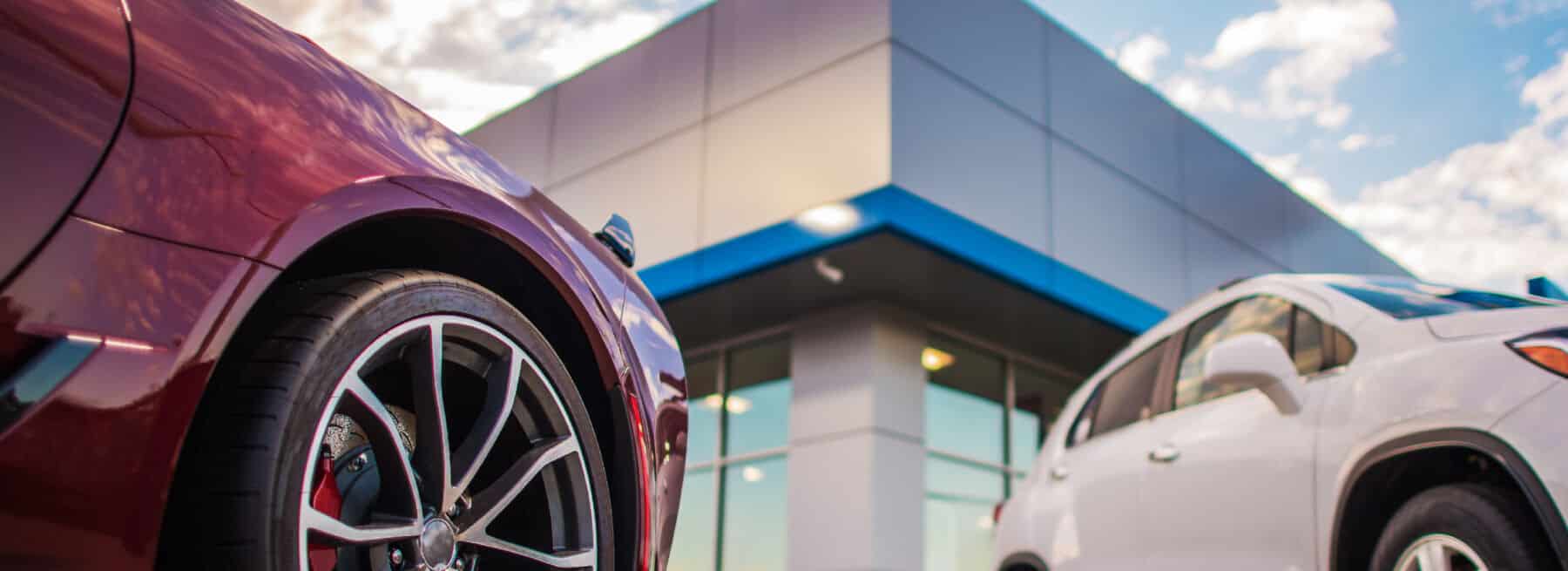The automotive industry finds itself facing a symphony of challenges that are leaving dealerships across the globe tapping their toes nervously. Imagine walking into your favorite car showroom, envisioning the sleek lines of your dream ride, only to find barren spaces instead of rows of shiny vehicles. Welcome to the reality of inventory shortages, a waltz orchestrated by the notorious global semiconductor chip shortage in recent years.
As the world becomes increasingly interconnected, the automotive industry’s heartbeat is synchronized to the rhythm of the supply chain, a rhythm that’s been out of sync lately. Supply chain disruptions have hit car dealerships hard, turning what used to be a seamless process into a chaotic remix of delays and uncertainties. It’s like trying to follow a GPS that constantly recalculates, leaving dealerships and customers alike wondering when they’ll reach their destination.
Now, there’s another layer of complexity to the mix – rising costs. Just when you thought the road to a new car market couldn’t get bumpier, the price tags on those coveted vehicles are inflating faster than a tire with a slow leak. From manufacturing to transportation, every step in the process has become a costlier endeavor. Unfortunately, these costs are passed down to the consumer. The days of snagging a deal seem like a distant memory as dealerships navigate the precarious terrain of pricing and profit margins.
Yet, it’s not just the tangible obstacles that dealerships face. It’s also the intangible shift in customer expectations. In an era where instant gratification is the name of the game, customers demand a seamless, digital-first experience. They want to browse, customize, and even purchase their dream car from the comfort of their living room, challenging dealerships to adapt or risk being left behind.
In diving deeper into the intricacies of automotive dealerships’ challenges, it becomes clear that this industry is wrestling with more than cars. It grapples with a rapidly changing landscape that demands resilience, adaptability, and striking a balance dance between tradition and innovation. Buckle up. The industry is dealing with its worst outlook since Cox Automotive released its Dealer Sentiment Index per Automotive News.
Automotive Dealership Challenges
The story explains that automotive dealerships are being cautious about 2024. They’ve been dealing with the industry’s biggest challenges of depleted inventories and high costs. As car inventory levels approach normal levels, dealerships feel pressure to make sales. Rising interest rates and customers keeping their vehicles longer aren’t helping matters.
The situation calls for coming up with creative solutions to continue selling vehicles and servicing them. Here are the five top issues they continue to face.
1. Supply chain disruptions
A Forbes story confirms that automotive dealerships and manufacturers battle complex and frequently changing conditions. The lagging supply chain is one of them. The COVID-19 pandemic has caused major disruptions to the global supply chain. This has led to delays in the delivery of new cars and parts, which has further frustrated customers and increased costs for dealerships.
Some productions have to be shut down for various reasons including parts supply problems according to Business Insider. The article describes the relationship between manufacturers and parts companies as imperfect, but it has been more noticeable in recent times. Suppliers find themselves extended leading to financial problems.
If suppliers end up in dire straits, then the manufacturers could lose their parts. In doing so, they’ll bleed money as they build up their supply and pass the costs to the consumer.
2. Rising costs
As previously stated, many factors drive up the costs including everything from labor to materials. These put pressure on dealerships’ profit margins. To ensure they’re profitable, they’re raising their prices much to their customers’ dismay. Higher interest rates and higher cost of living have largely affected product affordability.
MSN refers to a Forecourt Foresight survey in which more than four out of five dealers believe the growing costs will be their biggest challenge in 2024. This affects consumer confidence and makes them more reluctant to buy big-ticket items. Even if inflation is turning around for the better, it won’t solve the cost-of-living troubles.
3. Changing customer expectations
Vehicle customers are more informed and demanding than ever before. They expect dealerships to be transparent, streamlined and deliver a seamless and personalized customer experience. This can be difficult for dealerships to achieve on top of all the other challenges they face.
Customers seek greater flexibility and control over the entire process of buying a vehicle. They expect the dealership to excel in quality and speed of communications. They expect online information and tools to be available, relevant, and easy to find and access. Customers want a more efficient and effortless paperwork and financing process.
Thanks to the pandemic, customers prefer to do as much vehicle shopping online. They go to the dealership as a last resort. Dealerships have gotten creative in bringing the vehicles to consumers’ locations for them to test drive. If they opt to buy the vehicle, they complete the paperwork on the spot. Customers tend to do most of the paperwork online before they start shopping.
Heavy-handed sales tactics don’t work anymore. Customers expect automotive sales professionals to be more professional and informed and less focused on sales. In short, dealerships need to ramp up the customer experience and carry it over to their service center.
4. Global semiconductor shortage
The global semiconductor chip shortage has caused a major disruption in the automotive industry, leading to significant inventory shortages. This has made it difficult for dealerships to meet customer demand and has resulted in higher prices for both new and used vehicles.
The semiconductor shortage has given the automotive industry the fits since the pandemic reared its ugly head. The semiconductor chip and other shortages are improving, but they remain a challenge for automotive dealerships.
J.P.Morgan global research indicates chip shortage may continue through 2024. The good news is that the research believes the auto sector will see more stable prices as the supply of semiconductors improves. The research shows less earnings volatility as original equipment manufacturers (OEMs) will have strong pricing power.
“We anticipate tight control over inventories, which maintains pricing power for OEMs and reduces the likelihood of rising incentives,” says Jose Asumendi of J.P.Morgan.
5. Growing number of vehicle thefts
Vehicle theft has passed the 1 million mark in 2022 for the first time since 2008 per the National Insurance Crime Bureau (NICB). How much is 1 million thefts in six months? It’s about two cars stolen every minute.
A Kelley Blue Book report references the Council on Criminal Justice (CCJ) warning that comes from the large jump in motor vehicle theft as they were 33.5% higher in the first six months of the year than during the same period in 2022. Part of the drastic rise stems from thieves gaining more know-how in committing high-performance vehicle and luxury vehicle theft.
How Remote Video Monitoring Helps Automotive Dealerships
There are multiple ways to counteract four of the challenges. But one thing can help with all these issues affecting automotive dealerships. This one thing is video surveillance with remote monitoring. Here are the ways it can help neutralize these issues.
Improve security
Remote video monitoring can help dealerships deter theft, vandalism, and other crimes that affect their thin profit margins. Deterring these issues can save a lot of money on insurance, replacements, and repairs. Security cameras planted around the dealership lot can also help to create a more secure environment for employees and customers.
Optimize operations
By providing real-time insights into customer behavior and traffic flow, remote video surveillance can help dealerships optimize their operations. Management can use this information to adjust and improve staffing levels, lower wait times, and improve overall efficiency.
Enhance customer service
In optimizing operations, dealerships end up increasing customer satisfaction and the chances they become loyal to the dealership. Moreover, management can use the recordings from the video cameras to observe customer interactions and identify potential problems.
While watching the recordings, management may find ways to be more proactive with customer service. In doing so, they can improve customer satisfaction.
Reduce fraud
Video surveillance with remote monitoring can help dealerships reduce fraud by providing evidence of criminal activity. This evidence can be used to prosecute criminals and recover stolen property.
Dealerships often deal fraud if customers claim the service team damaged their vehicle. In some of the cases, the customer drove on the dealership lot with the damage already present. Video cameras can monitor these and help protect the dealership from fraud claims.
Why Video Surveillance Is Effective Dealership Technology
A multi-layered security strategy that consists of remote video surveillance can help lower automotive dealership’s security vulnerabilities. Thanks to advancements in dealership security technology, remote video surveillance can be a cost-effective solution that delivers a fast ROI. Stealth Monitoring’s clients often see an ROI within months.
For a fraction of the cost of security guards and traditional security technologies, remote video monitoring can provide around-the-clock coverage across the entire lot including the service department, the office, and parking.
Traditional security solutions like basic security cameras and alarms are reactive options. They don’t act until after something transpires. Remote video surveillance is a proactive security solution because it can help deter crime and damage before anything happens.
The keys to powerful video surveillance are monitoring and video analytics. Without analytics and trained monitoring operators watching the cameras, the technology turns into a passive one. As a result, it can become a liability risk.
A remote video monitoring system can help reduce liability. This is because it depends on trained monitoring operators and video analytics to identify, review, and respond to dodgy activity in real time.
Stealth’s security experts can analyze the dealership’s perimeter to create a right-sized security solution. In choosing to work with us, dealerships gain access to security professionals who have experience in securing automotive dealership lots. To learn more, contact us.
Texas Private Security License Number: B14187
California Alarm Operator License Number: ACO7876
Florida Alarm System Contractor I License Number: EF20001598
Tennessee Alarm Contracting Company License Number: 2294
Virginia Private Security Services Business License Number: 11-19499
Alabama Electronic Security License # 002116
Canada TSBC License: LEL0200704

